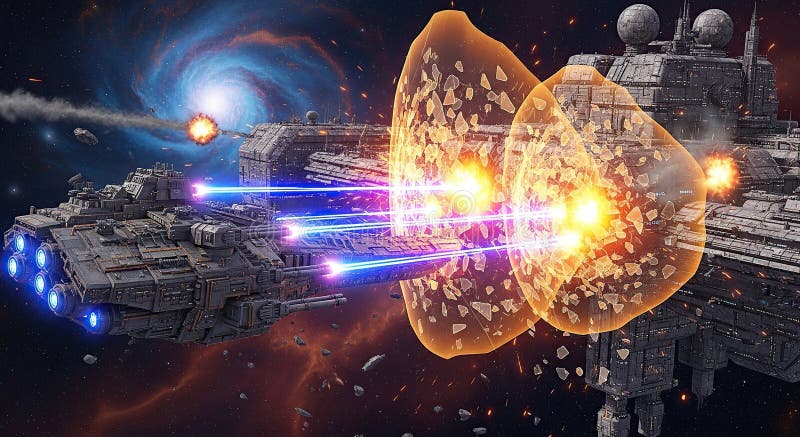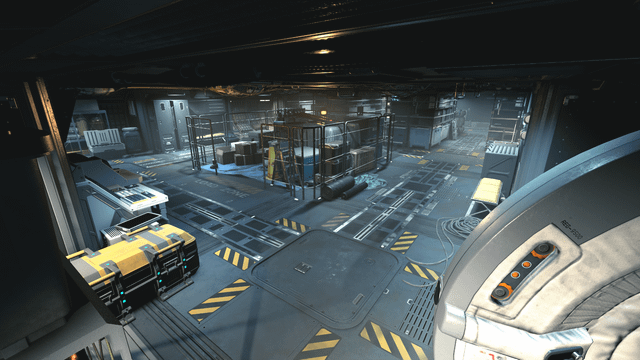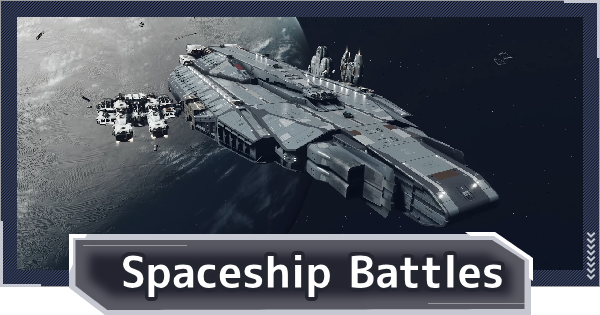Starfield Review: A Seasoned PC Gamer's No-Nonsense Take Starfield, Bethesda's grand spacefaring RPG, has finally landed, promising a galaxy of exploration, ship customization, and compelling narratives.

Starfield, Bethesda's grand spacefaring RPG, has finally landed, promising a galaxy of exploration, ship customization, and compelling narratives. As seasoned PC gamers, we approach such ambitious titles with a healthy dose of skepticism and a demand for genuine depth. This Starfield review dives deep into its gameplay mechanics, narrative structure, graphical fidelity, and PC performance, delivering a sharp, insightful assessment of whether it lives up to the hype. We'll explore if Starfield is worth buying on PC, focusing on core elements and how it stacks up against similar titles.
Gameplay & Mechanics: Charting Your Course Through the Cosmos
The depth of the ship customization options in Starfield allows you to create a ship tailored to your playstyle. The image displays the ship building menu showcasing a variety of modules.
Starfield places a heavy emphasis on ship-building and space combat, pivotal features that define the core gameplay loop. The ship customization interface is undeniably impressive. Imagine standing in a brightly lit, high-tech hangar bay, faced with a myriad of options. The depth of customization is substantial, allowing for genuinely unique designs with meaningful gameplay implications. You can create a sleek, fast scout optimized for speed with upgraded engine types or a heavily armored cargo hauler with reinforced plating.
The Ship Customization Equation: Depth vs. Vanity
The ship customization extends beyond mere cosmetic alterations. Different engine types directly impact speed and maneuverability, cargo holds affect your carrying capacity, and the placement of weapons heavily influences your combat tactics. This level of control is a welcome departure from simpler systems. Elite Dangerous comes to mind with its granular component upgrades, allowing for deep dives into the nitty-gritty of ship performance. No Man's Sky, while offering simplified resource gathering and crafting, doesn’t quite reach the same level of tactical customization.
Navigating the Void: Combat, Exploration, and Resource Management
 The image captures a dynamic space combat scenario, highlighting the weapon effects. Skillful piloting and strategic weapon usage is necessary.
The image captures a dynamic space combat scenario, highlighting the weapon effects. Skillful piloting and strategic weapon usage is necessary.
Space combat in Starfield can be thrilling. While it can sometimes devolve into mindless shooting, skillful piloting and strategic weapon usage are often required, adding a layer of depth that keeps engagements engaging. The game attempts to balance exploration (discovering uncharted planets and resources), resource management (gathering and crafting essential materials), and combat in space (engaging in dynamic dogfights and fleet battles). The success of this balance is debatable. Resource gathering can feel tedious at times, pulling you away from the more exciting aspects of the game.
Is the Fast Travel System a Crutch?
One of the more controversial design choices is the fast travel system. Instantaneous jumps between planets, while convenient, can detract from the sense of exploration. The vast galaxy can feel smaller and less interconnected as a result. This is a design choice that streamlines travel, but in doing so, it potentially diminishes the sense of scale and discovery that open-world space exploration games should deliver.
Narrative: Lost in Space or Guiding Star?
 A key dialogue choice illustrates character interactions and branching narratives. Selecting a dialogue choice can drastically change the outcome of the situation.
A key dialogue choice illustrates character interactions and branching narratives. Selecting a dialogue choice can drastically change the outcome of the situation.
The narrative structure of Starfield is a complex tapestry, balancing main quests with the allure of open-world exploration. The main storyline involves investigating ancient artifacts and unraveling galactic mysteries. The core question is: how compelling is this quest in driving player engagement?
Main Quest vs. Open-World Freedom: A Delicate Balance
The game's narrative structure rewards exploration and discovery, sometimes. Uncovering hidden lore and stumbling upon unique environments can provide enriching experiences. However, at other times, the main story beats can feel disconnected from the open world. It has a similar narrative structure of a Fallout game where you can choose to engage or not with the main quest. Does the freedom enhance or detract from the central narrative? The answer is, it depends. If you're susceptible to the pull of side quests and exploration, the main story's impact can be diluted.
Memorable Characters or Galactic Archetypes?
How memorable and well-developed are the main characters? The members of Constellation, rival factions, and enigmatic figures from the past have varied motivations. Some are believable, driven by personal desires and ideological conflicts. However, some characters can feel like archetypes. Facial animation and voice acting are generally convincing, but occasional uncanny valley moments can break the immersion. It feels like some characters are more developed than others and their motivations seem less authentic.
Graphics: Procedural Planets vs. Handcrafted Havens
 New Atlantis showcases futuristic skyscrapers, level of detail, and atmosphere. The visual beauty of handcrafted locations are apparent when compared to procudral planets.
New Atlantis showcases futuristic skyscrapers, level of detail, and atmosphere. The visual beauty of handcrafted locations are apparent when compared to procudral planets.
Visually, Starfield is a mixed bag. The game juggles between procedurally generated planets and meticulously handcrafted elements. Exploring a desolate, procedurally generated moon bathed in the cold light of a distant star feels vastly different from wandering the neon-lit streets of a detailed city.
The Allure of Handcrafted Locations
The handcrafted locations are visually distinct and memorable, showcasing unique architectural styles, environmental details, and atmospheric effects. The visual detail and world density are impressive. Cyberpunk 2077 set a high bar for environmental detail, and while Starfield doesn't quite reach those heights, it holds its own. There are instances of pop-in and occasional texture loading issues, but these are not pervasive enough to ruin the experience.
Procedural Generation: A Blessing and a Curse
Repetitive environments across multiple planets are a common complaint. While procedural generation allows for vast landscapes, it can also lead to a sense of déjà vu. The handcrafted elements provide a welcome contrast, but the reliance on procedural generation is noticeable. Exploring a planet for 30 minutes and feeling like you've seen everything it has to offer quickly turns exploration into a boring chore.
PC Performance: Can Your Rig Handle the Cosmos?
 The performance comparison overlay graph showcases frame rates and CPU utilization on a high-end and lower-end system during a demanding scene at 1440p resolution.
The performance comparison overlay graph showcases frame rates and CPU utilization on a high-end and lower-end system during a demanding scene at 1440p resolution.
Performance on PC is a critical factor for any modern game, and Starfield is no exception. We tested Starfield on a variety of systems to analyze its CPU and GPU demands.
Testing Ground: Hardware Configurations
Our testing configurations included:
- Nvidia RTX 3070 (8GB VRAM)
- AMD Radeon 6800 XT (16GB VRAM)
- Intel Core i7-8700K (6 cores, 12 threads)
- AMD Ryzen 5 2600X (6 cores, 12 threads)
- 16GB of DDR4 RAM (for all configurations)
We measured average frame rates, minimum frame rates (1% lows), and noted any stuttering or performance dips at 1080p (high settings), 1440p (ultra settings), and 4K resolutions (ultra settings).
Performance Benchmarks: Highs and Lows
The RTX 3070 and 6800 XT performed admirably at 1440p, maintaining playable frame rates on ultra settings. However, the older i7-8700K and Ryzen 5 2600X struggled, particularly in densely populated areas. At 4K, even the higher-end cards showed noticeable performance dips. Shadow quality, lighting effects, and texture resolution had the most significant impact on performance. Lowering these settings can provide a substantial performance boost on older hardware.
Optimizing for Performance: Finding the Sweet Spot
Finding the right balance between visual quality and performance is crucial for older hardware. Turning down shadow quality and ambient occlusion can significantly improve frame rates without sacrificing too much visual fidelity.
Loading Times and System Resource Usage
Loading times between planets and in cities can be lengthy, especially on systems with slower storage devices. Overall system resource usage (CPU, GPU, RAM) is high, particularly under heavy load. Starfield supports FSR3, which helps improve performance, but DLSS support is currently lacking (though rumored to be coming).
Overall Experience: A Universe of Potential, Imperfectly Realized
 This images captures the sheer scale of Starfield and offers an enticing look into the game.
This images captures the sheer scale of Starfield and offers an enticing look into the game.
Starfield aims to create a compelling universe to explore. However, it's an ambition that's not always flawlessly executed. How does Starfield compare to other Bethesda titles like Fallout and The Elder Scrolls?
The Siren Song of Exploration
The sense of exploration and discovery is at the heart of Starfield. When it works, it’s captivating. Stumbling upon a hidden research facility or uncovering a long-lost artifact can be incredibly rewarding. However, the reliance on procedural generation can sometimes undermine this sense of wonder.
Fallout in Space?
Compared to Fallout and The Elder Scrolls, Starfield shares a similar DNA in terms of world-building and player freedom. However, it lacks the tight focus and meticulously crafted environments of those earlier titles. The sprawling nature of the game can feel overwhelming at times, with less directed gameplay that some may find tedious.
Is Starfield Worth it?

The vast planetary rings in the horizon, with the player in the distance creates a strong image. It has compelling stories, and rewarding gameplay that engages the player.
Starfield is a game with grand ambitions and a few notable shortcomings. Its ship customization and combat mechanics offer depth and tactical options, setting it apart from more streamlined titles. However, its reliance on fast travel and procedural generation can detract from the sense of exploration. The narrative structure, while rewarding exploration, sometimes feels disconnected. Graphically, the game shines in its handcrafted locations but struggles with repetitive procedural environments. PC performance is demanding.
Is Starfield a must-play for PC gamers? Yes, but with caveats. It's a sprawling RPG with moments of brilliance, held back by uneven execution. The game needs improvements in various areas.
Final Score: 7.8/10. The strengths lie in its ship customization, tactical combat, and occasional moments of narrative brilliance. The weaknesses are its performance and reliance on procedural generation.
Starfield Resource Guide Starfield Story and Lore Analysis Starfield PC Performance Optimization Guide Starfield Faction Guide
Frequently Asked Questions about Starfield
This section includes questions that users might have and answers them. It can potentially be used as a featured snippet.
Is Starfield open world?
Yes, Starfield is an open-world RPG. It allows you to explore a vast galaxy with numerous planets, cities, and locations to discover. However, it's important to define "open world" in the context of Starfield: While there are no invisible walls preventing you from traversing a planet, the game is segmented by different star systems and planets, each requiring a loading screen to access.
What are the Starfield factions?
Here are some of the factions in Starfield:
- Constellation: A group of space explorers dedicated to uncovering the mysteries of the galaxy.
- United Colonies: A powerful political and military faction that values order and control.
- Freestar Collective: A loose confederation of independent systems that champions freedom and individuality.
- Crimson Fleet: A notorious band of pirates that prey on unsuspecting travelers.
How long is Starfield's main story?
Starfield's main story is estimated to take around 25-40 hours to complete, depending on your playstyle and difficulty setting. However, the game also features a wealth of side quests and activities that can significantly extend your playtime.
Can you fly ships in Starfield?
Yes, you can fly ships in Starfield. You can pilot your ship in space, engage in dogfights, and travel between planets and star systems. You can also customize and upgrade your ship with different weapons, engines, and modules.
Why is my Starfield performance so bad?
If you're experiencing poor performance in Starfield, here are some troubleshooting tips:
- Update your graphics drivers: Ensure you have the latest drivers installed for your GPU.
- Adjust graphics settings: Lower the shadow quality, lighting effects, and texture resolution.
- Close background applications: Free up system resources by closing unnecessary programs.
- Install the game on an SSD: Reduce loading times and improve overall performance.
- Verify the integrity of game files: Check for corrupted or missing files.
 This images showcases the various planets players will be able to explore throughout the game.
This images showcases the various planets players will be able to explore throughout the game.
Is Starfield Worth The Hype?
As a PC gamer with deep knowledge of game design and technical performance, I can confirm Starfield brings forward a fresh take to exploration with its vast world and ship customization feature. At the core of the game lies a captivating universe filled with intrigue and the freedom to explore.
Starfield: Best PC Graphics Settings
Finding the perfect balance between visual fidelity and performance is crucial for an enjoyable gaming experience. Here are some graphic setting recommendations so you can make an informed decision.
Shadow Quality
Adjusting shadow quality can significantly impact performance without sacrificing too much visual detail. Lowering the setting will reduce the resolution and detail of shadows, resulting in a noticeable frame rate increase, especially in areas with complex lighting.
Lighting Effects
Lighting effects, such as ambient occlusion and global illumination, can greatly enhance the visual depth of the game. However, these effects can also be very demanding on your system. Lowering the intensity or disabling these effects can provide a significant performance boost.
Texture Resolution
 This image highlights the deep character customization and character creation offered in Starfield.
This image highlights the deep character customization and character creation offered in Starfield.
Setting the texture resolution to high or ultra can significantly improve the sharpness and clarity of textures. However, this can also increase the VRAM usage and impact performance, particularly on systems with less powerful graphics cards.
Is Starfield moddable on PC?
Bethesda has confirmed that Starfield will feature full mod support on PC. The game will include a Creation Kit, allowing modders to create and share their own content, such as new quests, items, and gameplay mechanics. This will help improve Starfield's gameplay in the future.
Starfield: Should you buy it or skip it?
Starfield's PC review gives it a buy recommendation. It offers a deep and engaging experience that is worth buying.
The Final Thoughts:
